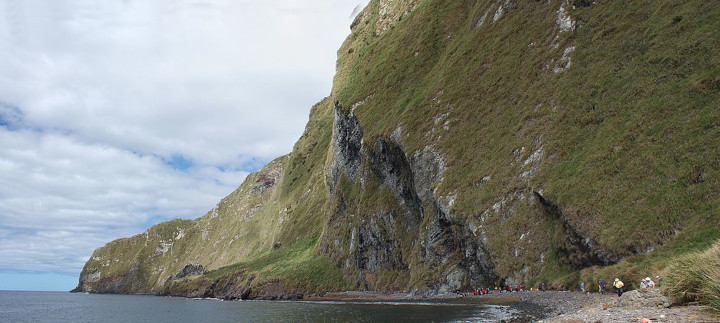Inaccessible Rail sounds like a train that is not available. I can imagine saying something like “I might be late because I might run into some inaccessible rails”. But there is a more fun meaning of the phrase.
Rail, in this context, is a type of bird!

Using rail to refer to birds predates using rail to refer to railways. The earliest rail(bird) reference in the OED1 is from the 1400s. The earliest rail(track) reference is from the 1600s when the first rail tracks were being laid for wagons. So rails referred to birds for 200 years before railway tracks ever existed!
It’s worth pointing out that rail(bird) shouldn’t be confused with railbird. Rail(bird) is me denoting that the word rail is being used to refer to a bird. Railbird, on the other hand, refers to a person “perched” on the rails at a sporting event like horse racing.
Now, we get to the fun part: Inaccessible. That refers to the Inaccessible Island. Inaccessible Island is part of a group of islands (Tristan da Cunha, Nightingale Island, Gough Island) that together are considered one of the most remote/isolated parts of the world. However, that is not why the island was called inaccessible.

The island was called inaccessible because even after you get close to the island, it is hard to actually get to shore as the shore is rocky and dangerous. And when you do reach shore, you are immediately faced with a steep rocky cliff making the interior of the island inaccessible.
The island was discovered in 1656 but remained unexplored for centuries. The first landfall was made in 1803 but the interior was not reached. The Challenger Expedition (named after the ship HMS Challenger, and the inspiration for the name Challenger Deep and the space shuttle Challenger) traveled to the Inaccessible Island in 1873 and found two brothers living on the island!
The brothers, Frederick and Gustav Stoltenhoff, had gone to the island with an ill-prepared plan to make money by hunting and skinning seals2. When they arrived on the island, they realized that they didn’t know how to skin animals. They even managed to lose their boat and tools soon after arriving. They struggled on the island but they still refused boats that offered them passage off the island in the hopes that they still might be able to make money from the island. They eventually gave up two years later and were happy to be “rescued” by the HMS Challenger.
The brothers shared their knowledge of the flora and fauna of the island. One bird of interest was a small flightless bird that wasn’t seen on any of the other nearby islands. The Challenger Expedition recorded the observation but was unable to capture a sample. A bird was finally captured and studied 50 years later in 1923. The bird was found to be a rail and so was named the Inaccessible Island Rail.
Since people love cutting out redundant information though, the word “Island” occasionally gets dropped, even in academic writing. Percy Lowe who studied the original captured specimen refers to the bird as the Inaccessible Rail as early as 1928!
So if you hear me saying “I might be late because I might run into some inaccessible rails”, I might just be scared of being attacked by a pack of small flightless birds.
OED is the Oxford English Dictionary which is well-known for tracking word origins and early uses. While it is paywalled, many public libraries have access so try logging in with your library card! ↩︎
A book about the brothers, Shelter From The Spray, was written 70 years later in 1954. This blog post shares funny bits from the book. ↩︎